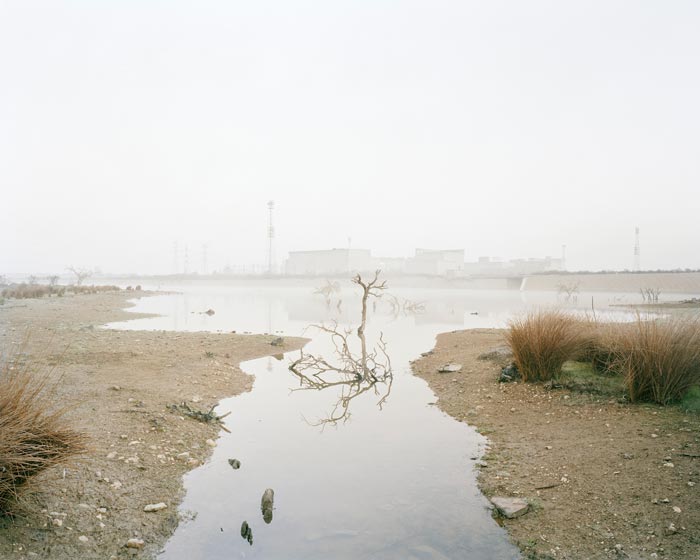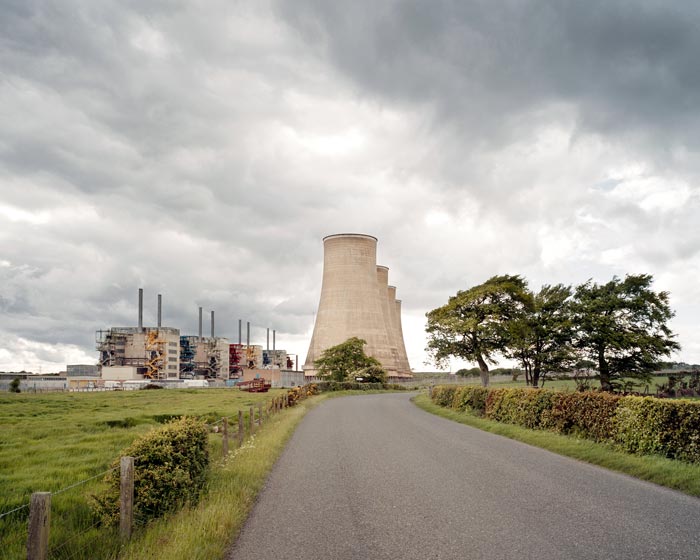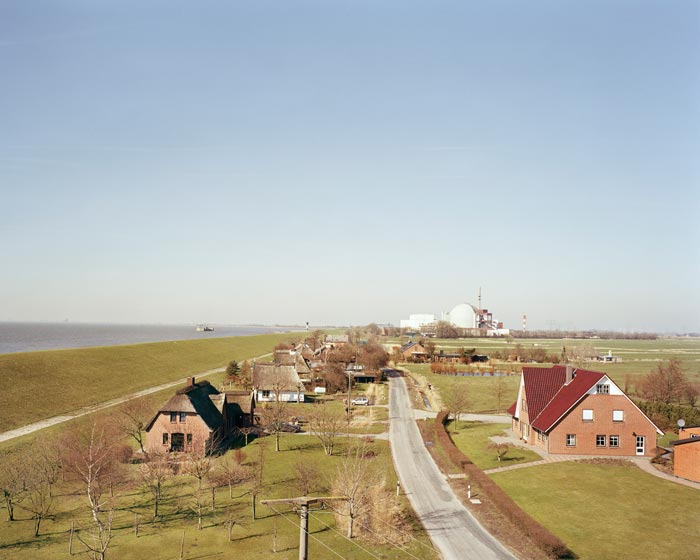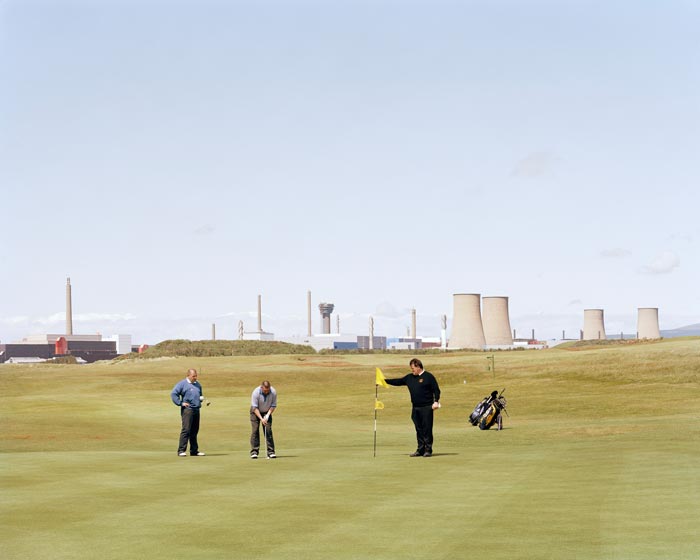Jürgen Nefzger - Fluffy Clouds
"With 'Fluffy Clouds', Jürgen Nefzger takes us on a journey through several European
countries: France, Germany, Spain, Switzerland, Great-Britain and Belgium, all of which are
strongly dependent on nuclear power. This series goes further than merely cataloguing power
stations. It covers great geographical diversity by situating them in their natural and
social environment. The representation of various landscape patterns is underlined by the
use of a wide range of colors and lighting situations, following the course of a full year.
By choosing the power station as a symbol these images address sociological, ideological and
political issues."
Raphaëlle Stopin in Catalogue des Rencontres Arles, 2005
Artist Statement
Fluffy Clouds, a series of 75 images on the close surroundings of nuclear power plants,
is part of my ongoing reflection on the environment and our ways of dealing with our
still-growing dependency on energy. The title conveys a widely-held picturesque view:
that of a beautiful landscape beneath a peaceful sky. The beauty of the sites and the
carefree attitude of the people who inhabit these decors are contrasted in each image
with the presence of a nuclear power station. Beneath a dazzling sky, another aspect of
the landscape is brought to light. We are in an observed area, faced with an industry
that is subject to heavy criticism for the risks, the pollution and the costs that it
generates.
To shoot the Fluffy Clouds series, starting in 2003, I travelled to nuclear power plants
in France, Great Britain, Switzerland, Germany, Belgium, and Spain at various times of
the year. The series unfolds from spring to winter, which allows the different images to
be viewed in a linear time frame and the various landscapes to be linked to each other.
I believe that this cyclical approach is a better way of presenting the subject of
nuclear power than an inventory, which would have been controlled, for example, by
geographical and border criteria, and which would be obsolete in the event of an
accident.
In Fluffy Clouds, the nuclear reactors are nested in the landscape, and, in a terrifying
way, appear to be inoffensive fragments of nature. People are enjoying leisure
activities in their immediate surroundings without a second thought: playing golf and
tennis, fishing in neighboring ponds, swimming in the sea or growing vegetables in
communal gardens and fields, all within sight of the nuclear power stations. Many of the
pictures convey the beauty of nature, wherein the nuclear stations themselves become
“scenic,” as in the picture of Beznau in Switzerland. As the real threat has slipped
into the invisible, I try to show how people are growing oblivious to the inherent
threat linked to nuclear energy facilities.
The announcement of an imminent catastrophe is hiding in all these images, which not
only carry the traces of human intervention on nature, but show how much we have adapted
to those deformations and how we accept most of them. Even though the recent catastrophe
in Fukushima revealed the devastating potential of nuclear power stations, triggering a
temporary crisis and heated debates, the United States has just announced a plan to
build nuclear plants in the state of Georgia.
For a long time, we have been in an advanced stage of assimilation of nature, and now we
have entered a time of profound alienation of nature—a trend that will not be easily
reversed.

Dounreay, Scotland, 2005

Paluel, France, 2003

Grohnde, Deutschland, 2005

Trawsfynydd, North Wales, 2005

Valdecaballeros, España, 2006

Brennilis, France, 2011

Chapelcross, Scotland, 2005

Brokdorf, Deutschland, 2005

Sellafield, England, 2005

Asco, España, 2005

Bugey, France, 2003

Tricastin, France, 2003

Cofrentes, España, 2005

Nogent-sur-Seine, France, 2003

Penly, France, 2003

Kalkar, Deutschland, 2005

Goesgen, Suisse, 2004

Beznau, Suisse, 2004

Leibstadt, Suisse, 2004

Isar, Deutschland, 2004

Isar, Deutschland, 2004

Grafenrheinfeld, Deutschland, 2005

Gundremmingen, Deutschland, 2005